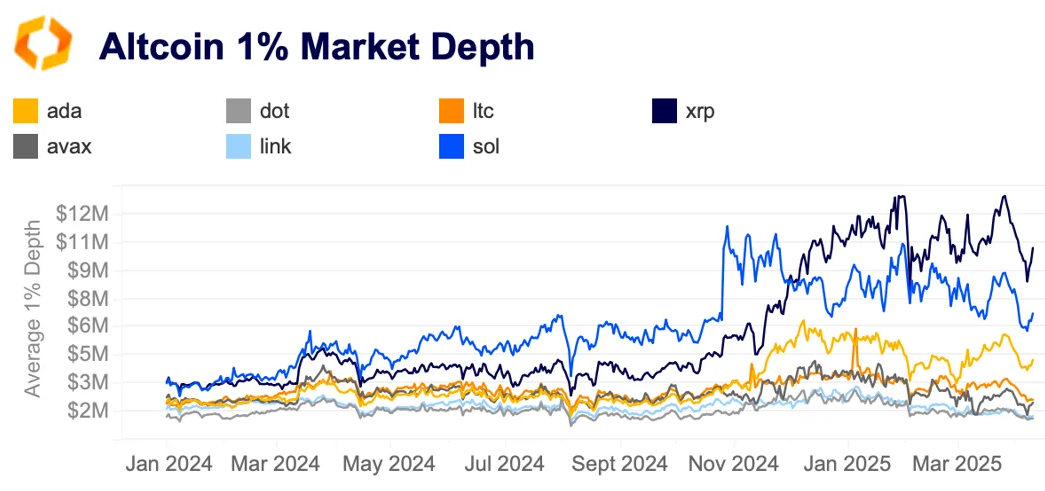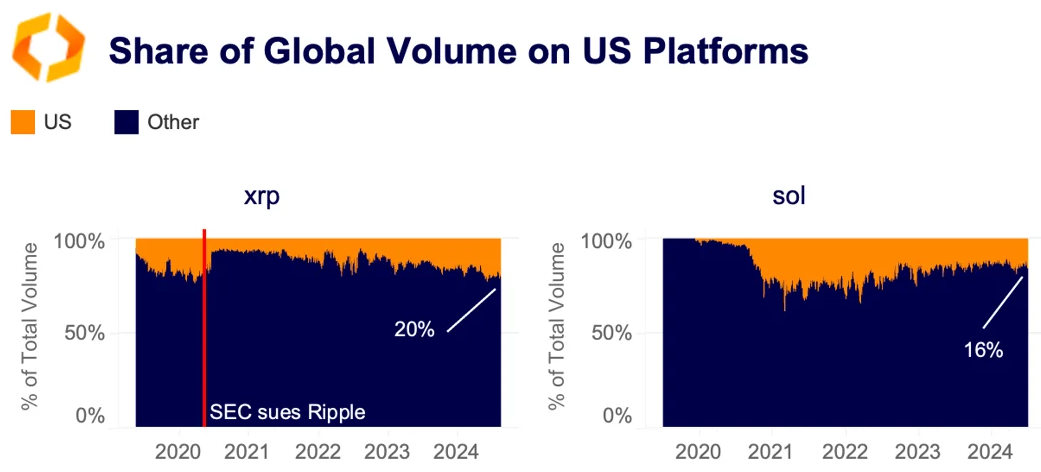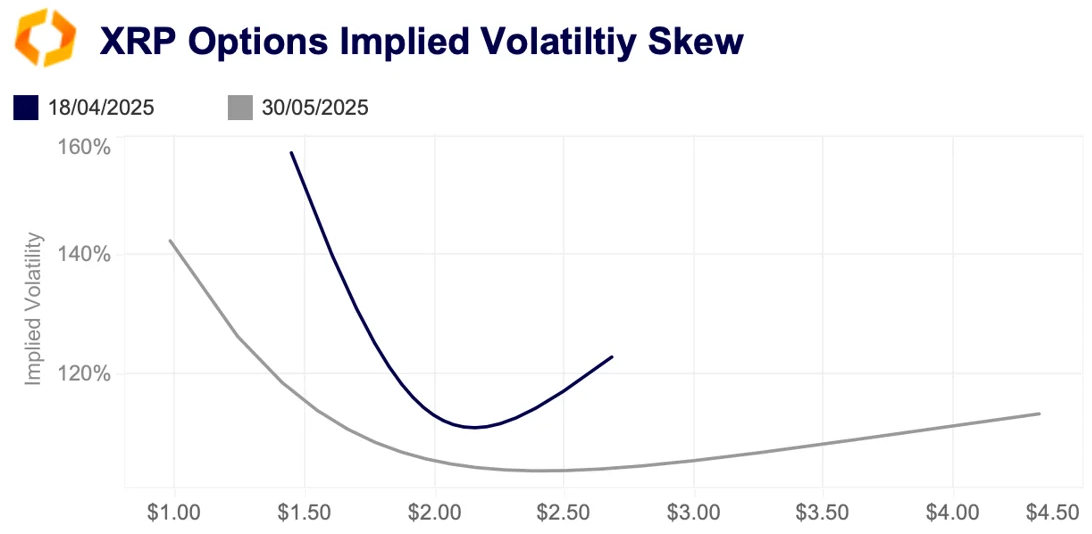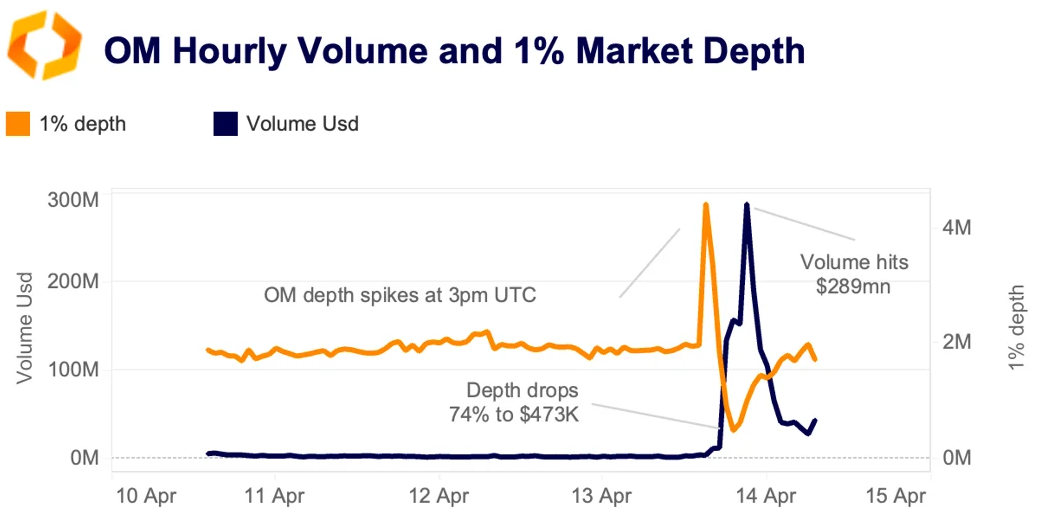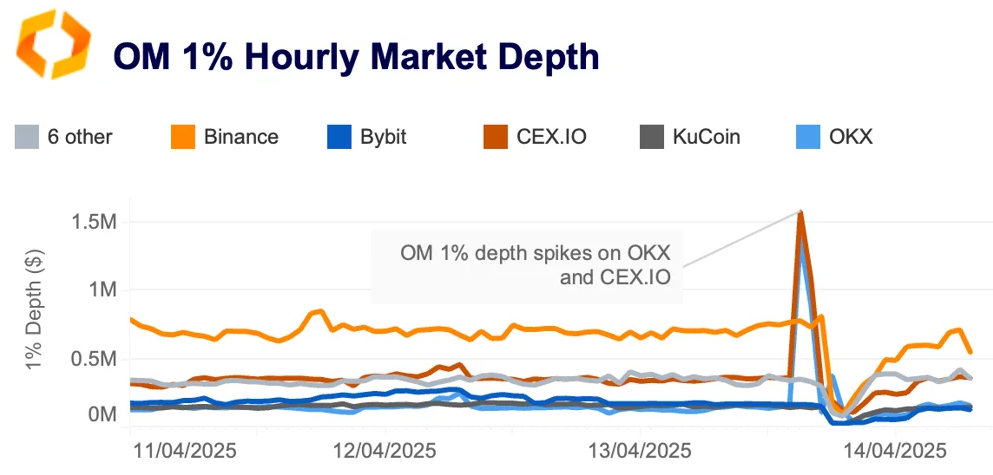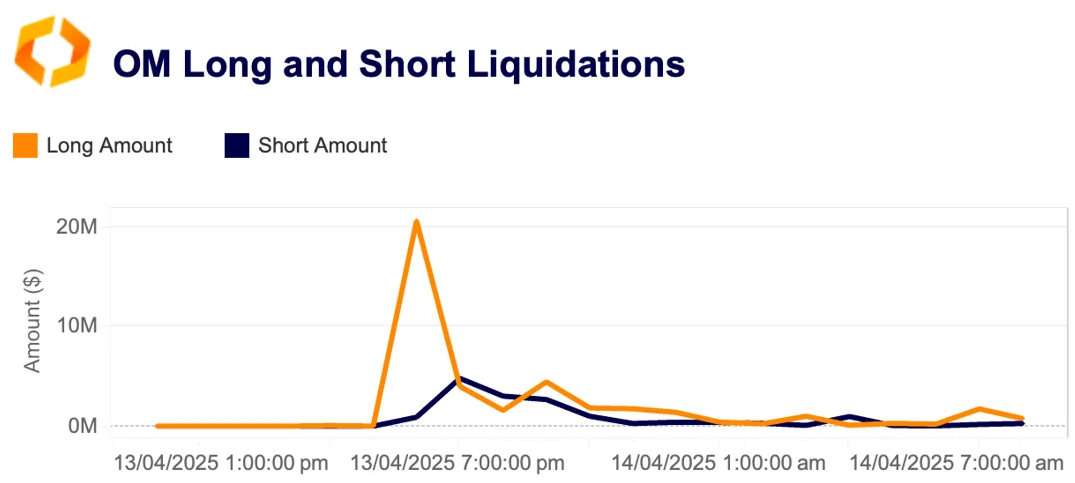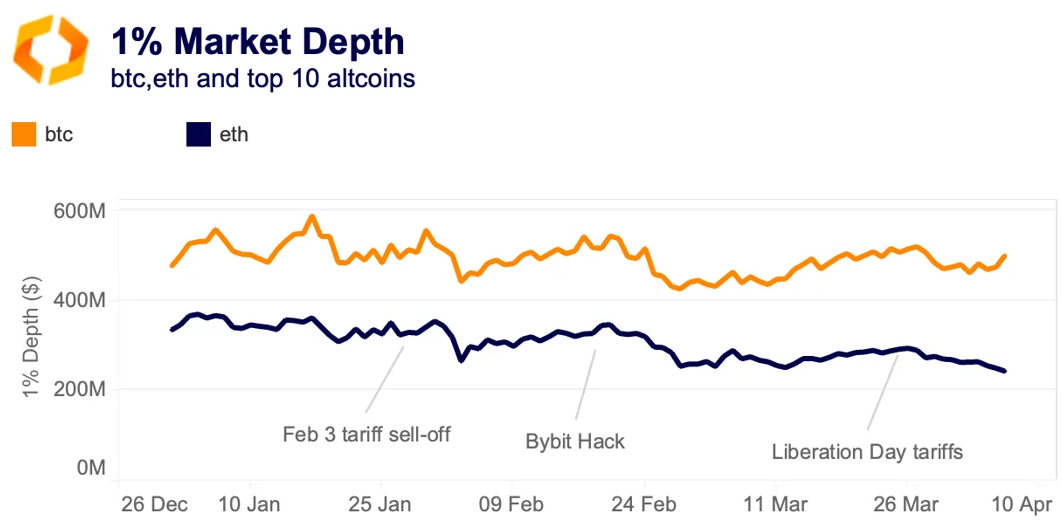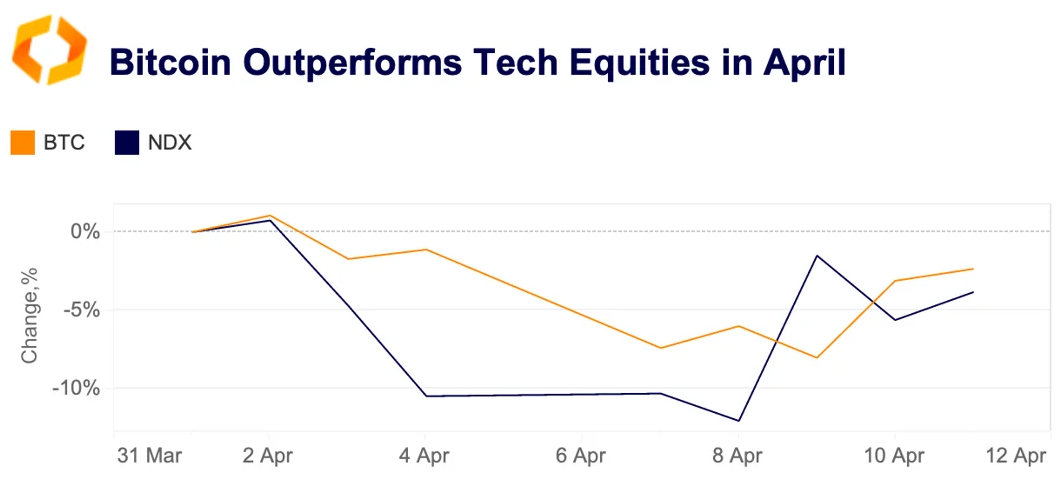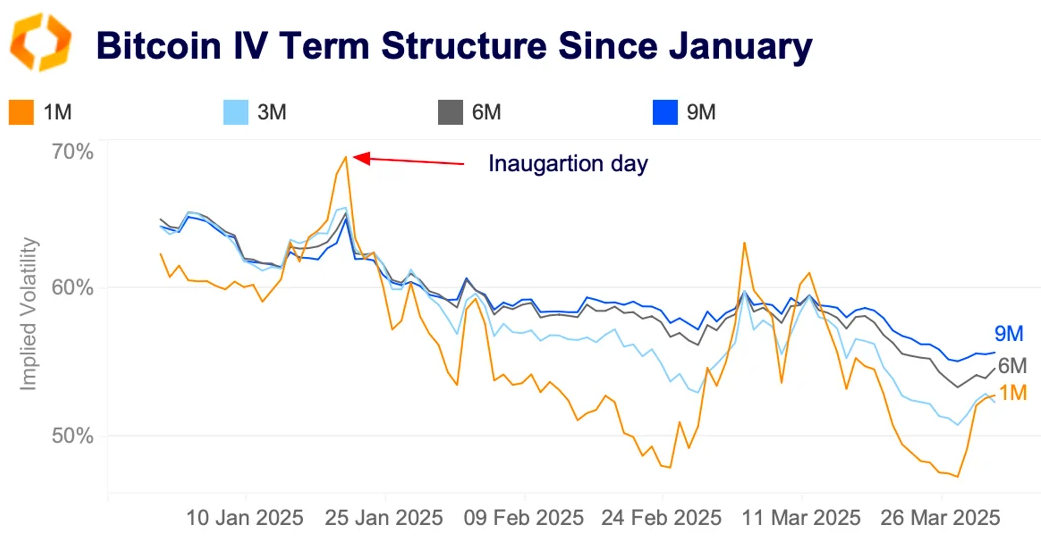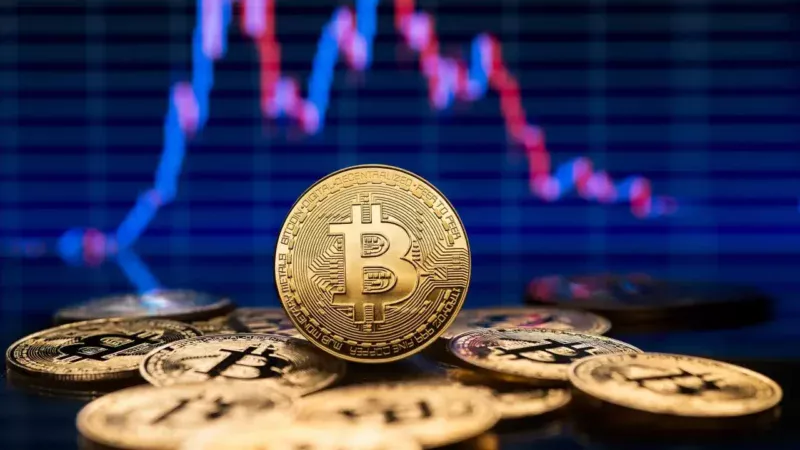The race for an XRP ETF wins on driving

A summary weekly review of the events on the crypto markets with a focus on trend sectors, liquidity, volatility, spreads and more in cooperation with market data providers Kaiko.
The markets gave up on Friday after China announced 125%tariffs on US goods from April 12th. That was the reaction to the imposition of a selective 90-day customs break from the US President, who excluded China. Ripple acquired Hidden Road for USD 1.25 billion, while Binance continues the negotiations with Trump's crypto company. This week we explore:
- ETF periods approach
- BTC liquidity remains stable, but IV indicates more volatility.
- 90% price drop of the mantra token
XRP liquidity betting run before the Krypto ETFs have expired
With the confirmation of the new chairman Paul Atkins by the Senate last week, a new era begins in the US stock exchange supervision. The former commissioner has a lot to do when he takes up his new office. Although cryptocurrencies only make up a tiny part of the market activities in the United States, urgent deadlines could come to the fore for the new chairman.
A number of asset managers have submitted applications for crypto-related ETFs. In view of the rapidly closer deadlines, Atkins could set the course at an early stage – and completely change the previous regime at the SEC.
XRP and SOL are two of the most popular assets for ETF applications and are also among the most liquidest. A high -liquid cash market is important for the creation of efficiently structured products. The previous SEC lead was very sensitive in this regard.
Both XRP and Sol have the highest average market depth of 1% of the stock exchanges checked by Kaiko Indices, while Cardanos ADA is in third place. The market depth of XRP has risen sharply since the end of 2024 and has overtaken SOL.
The decisive factor for the approval of the BTC ETF was the legal case of Grayscale, which showed the contradictory representations of the Sec. The supervisory authority had approved a BTC futures ETF, which was based on the CME Futures market. Since the futures and spot markets were correlated to over 99%, the supervisory authority finally had to steer and approve the ETF.
Challenges for XRP-ETF
XRP is very different: there is no active futures market – until now – and its volume is strongly focused on the offshore market. However, its share in the casha volume on the US exchanges has recently climbed to the highest level since the time before the SEC complaints from 2021, which led to extensive listings. In contrast, the market share of Solana (Sol) has decreased on the US exchanges and is now 16% after it was still 25-30% by 2022.
This underlying market dynamics and the introduction of a 2-fold XRP-ETF in the past week, XRP position in front of other assets when it comes to approval. Although some tokens such as LTC, which have very similar consensus mechanisms such as BTC and have similarities with raw materials, could also have a clear way to admission.
Despite this positive tailwinds for XRP the option market on deribit tends to decline. The IV Smile for the upcoming expiry date on April 18 is severely inclined to the left, which indicates a demand for downward protection. This is probably due to the broader market uncertainty, which is currently due to macroeconomic concerns.
The SEC recognized XRP applications for spot ETFs and for other tokens at the end of February. May 22, in view of the latest ETF approval of a 2x XRP ETF from Teucrium, is an important date, which must be observed, since the SEC has to react to the XRP spot application from Grayscale by then. Since this levered ETF is dependent on returns from European ETPs and swap agreements to guarantee the double daily returns from XRP, it is difficult to see why a spot product is more risky and therefore invalidates most of the arguments for the rejection of these applications.
Liquidity behind the collapse of the OM token from Mantra
On Sunday, the OM-token from Mantra Chain, a prominent RWA project, broke up by over 90% between 6:00 p.m. and 8:00 p.m. Once a top 20 crypto-asset with a market capitalization of 5.9 billion USD, its evaluation fell within a few hours to less than 1 billion.
The exact cause of the crash is uncertain, but it is speculated that the project team or marketmaker Token could have sold out of the market, which led to panic sales. The project's official X-account accused “ruthless liquidations” and promised an investigation.
Despite a strong average hourly market depth of $ 2.3 million in 2025, the sudden drop in prices overwhelmed the market maker. When they increased their commitment, the trading volume increased and reached 290 million USD until 9 p.m. – more than a hundred times the typical 1 %depth.
The stock exchange data showed a temporary liquidity tip before the collapse, especially on OKX. From 5:00 p.m. to 7:00 p.m., the entire 1% depth sank across all platforms by 74% to $ 473,000, since the liquidity evaporated.
At the same time, the liquidations on OM-Perpetuals rose strongly. Around 6 p.m., the liquidations of long papers achieved a maximum of $ 21 million at OKX alone, which should increase the price pressure on the already weak market. The refinancing rates turned negative during the event and remain below zero, which indicates a continuing Baisse mood.
Bitcoin liquidity remains stable despite increasing volatility
Despite the increasing volatility, Bitcoin's market depth rose by 1% to $ 500 million at the end of the quarter. The liquidity decreased on February 3 after the sale of the tariffs, but the market makers kept the BTC engagement stable until March and increased it in early April despite the global sale on Liberation Day.
The US platforms have strengthened Bitcoin's liquidity, with the proportion of global depth of the market was 58% before it went back slightly at the end of March. Cex.io, octopus and coin base make up over 60% of the BTC market depth. In the meantime, the ETH liquidity between January 1 and April 6th fell by 27% to $ 243 million, since the ratio of BTC to ETH reached a five-year low. A detailed analysis of Bitcoin liquidity can be found in our quarterly report.
BTC exceeds stocks in the middle of the continued customs madness
Last week, the US President suspended the mutual tariffs for all countries out of China, which led to another volatility on the financial markets and revived the fear of a “Dash-for-Cash” of the Covid era. The market-wide sale began on Monday, as both US bonds and stocks were under pressure. In the middle of the week, the descent intensified and drove the 10-year-old returns by 16 basis points to 4,425%.
All hopes of stabilization were short -lived. On Friday, China with far-reaching tariffs of 125% piped back on all US goods and thus triggered another wave of risk of risk. Nevertheless, Bitcoin managed to develop better in April than to book other risk systems and lower losses than US tech shares.
However, the markets for crypto options signal caution, since the dealers continuously rate the risk in response to Trump's unpredictable trade steps. In the first quarter, the whipping price movement led to repeated reversal in the running structure of the implicit volatility (IV) of Bitcoin, whereby options with a short term were traded with a higher IV than options with a longer term, which indicates increased short -term uncertainty.
The customs break from April 10th could only prove to be a short grace period, and regular reversals of the IV date structure should not surprise anyone if we get to the rest of the year 2025. Expect around the tariff date of tariffs on July 8, bend in the IV termination.
